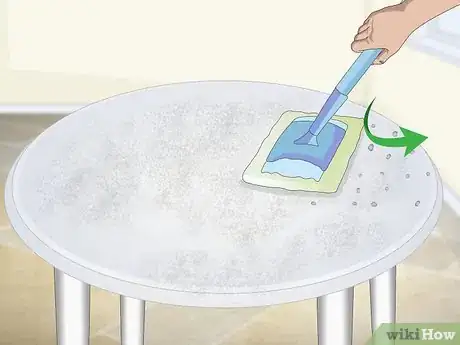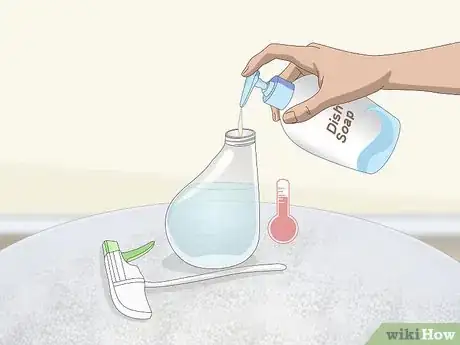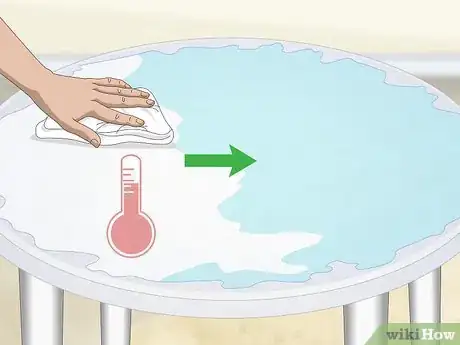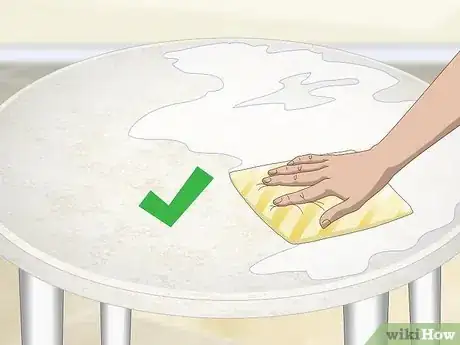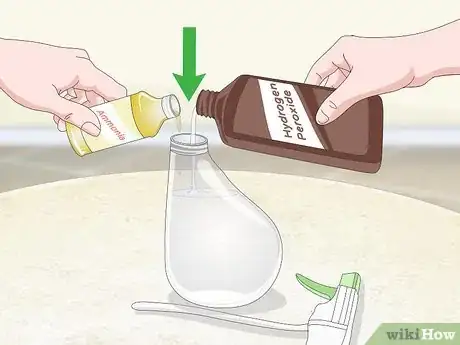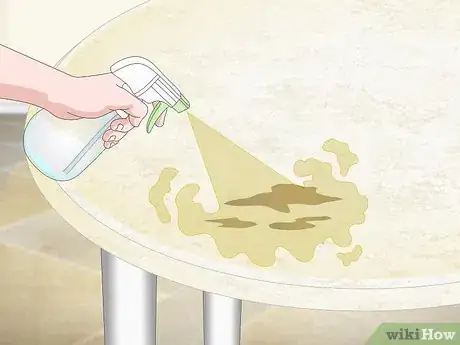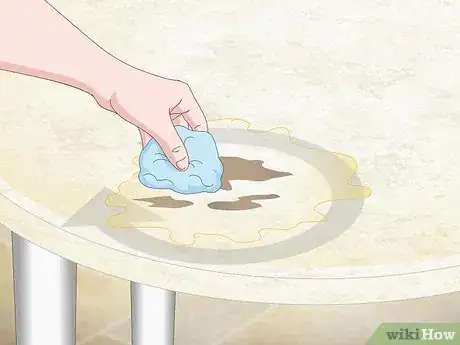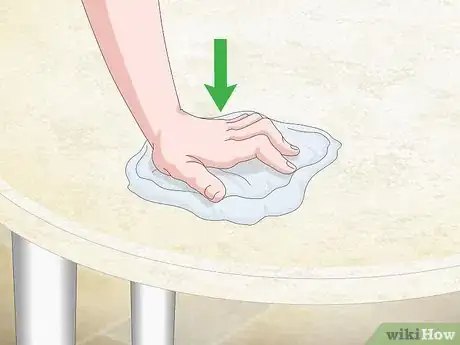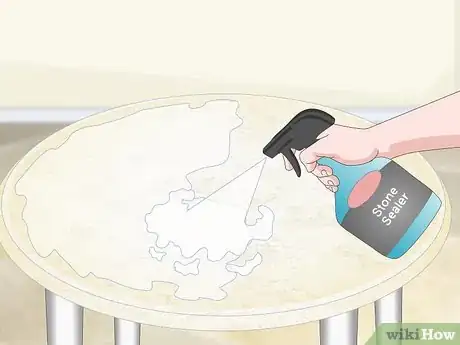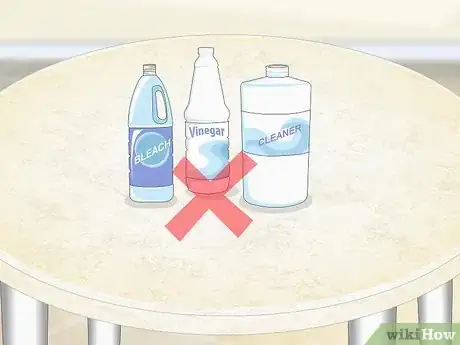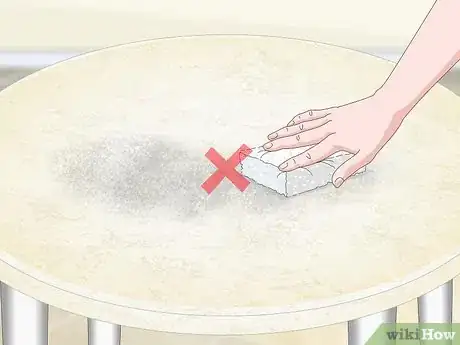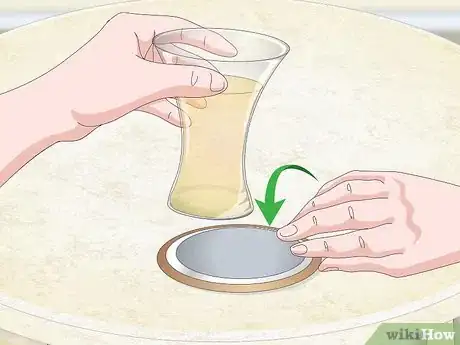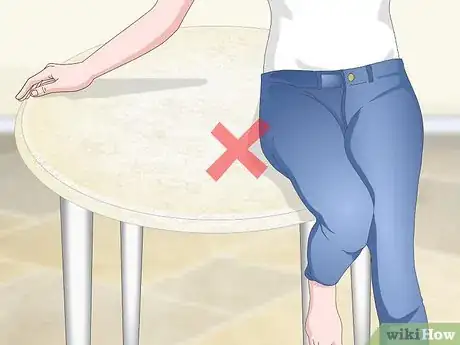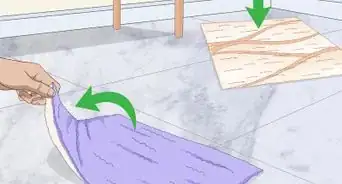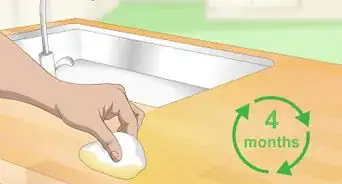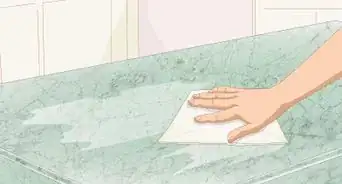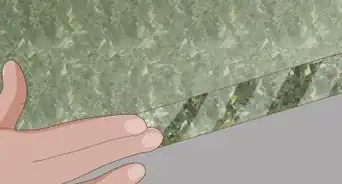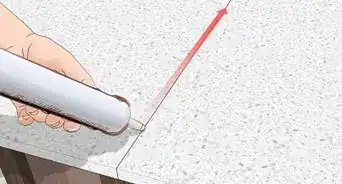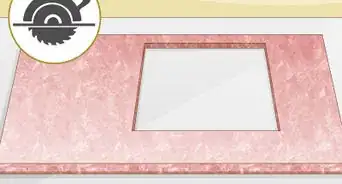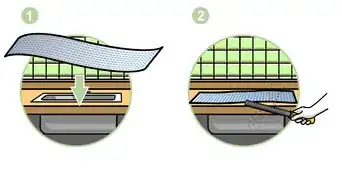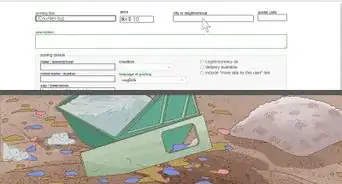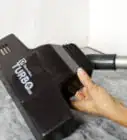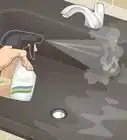This article was co-authored by Marcus Shields. Marcus is the owner of Maid Easy, a local residential cleaning company in Phoenix, Arizona. His cleaning roots date back to his grandmother who cleaned homes for valley residents in the 60’s through the 70’s. After working in tech for over a decade, he came back to the cleaning industry and opened Maid Easy to pass his family’s tried and true methods to home dwellers across the Phoenix Metro Area.
There are 9 references cited in this article, which can be found at the bottom of the page.
This article has been viewed 132,289 times.
Marble tabletops are a great style choice for your kitchen or dining room. Like most tabletops, though, you’ll need to clean your marble tabletops from time to time. However, because marble is very delicate, cleaning a marble tabletop requires a bit more caution and special care than cleaning other materials does.[1] Fortunately, whether you’re performing a daily cleaning or a deep cleaning, there are a number of ways you can clean your marble tabletop without having to worry as much about damaging it.
Steps
Performing Daily Cleaning
-
1Use a dust mop to remove dust, dirt, and debris from the tabletop. These types of particles need to be removed before you clean your marble with a liquid cleaning solution. If you don’t have a dust mop, use a microfiber cloth or a feather duster to clean the tabletop.[2]
- Avoid using a vacuum to clean dust and dirt off of marble, since the edge of the vacuum cleaner hose may scratch the sensitive marble surface.
- Even if you’re not planning to use a liquid cleaner afterwards, you should still dust your marble tabletop at least once every 2-3 days just to keep it clean. Dirt can be abrasive and damaging to a marble tabletop, so it’s best to do regular cleanings to protect your table.[3]
-
2Mix mild dish soap and warm water in a spray bottle. Pour about 1 tablespoon (15 mL) of gentle, non-abrasive dish soap into the spray bottle first, then fill it the rest of the way with warm water. Finally, place the spray head back on the bottle and shake it to mix the soap and water together.[4]
- When you add the water, leave about 1 inch (2.5 cm) of empty space at the top of the bottle. This will ensure there’s enough empty space in the bottle for the soap and water to mix.
- Don’t use any dish soap that contains acids, alkalis, or any other abrasive chemicals, as these will most likely damage the marble.[5] [6] Stick to dish soaps that are marketed as being non-abrasive.
Advertisement -
3Spray this cleaning solution across the surface of the tabletop. Apply a light but even coat of the solution across the part of the marble that you want to clean. Avoid using too much of the mixture, since excess liquid may damage your marble.[7]
- Although you’re going to wipe all of the cleaning solution off anyway, if you spray too much on your marble to begin with, this makes it more likely that you’ll accidentally leave some behind when you go to wipe it off.
-
4Wipe off the cleaning solution with a hot, wet cloth. This will serve to rinse your tabletop while also rubbing the cleaning solution across the marble surface. Be sure to remove all the soapy water from the surface of the tabletop before proceeding.[8]
- It’s fine to leave ordinary water on the surface for now, since you’re going to dry it off later. The most important thing to do right now is just make sure all the cleaning solution has been removed.
- For best results, use a microfiber cloth.
-
5Remove the excess liquid from your tabletop with an absorbent towel. Use a clean, dry towel with good absorption to make sure you’re getting all of the water off. Rubbing the tabletop with a towel will also serve to buff the surface and give it a good shine.[9]
- For best results, use a cotton towel.
- If you don’t have a dry towel, you can also use a squeegee to remove the excess liquid.
Removing Spots and Stains
-
1Make a mixture out of hydrogen peroxide and a few drops of ammonia. In a spray bottle, mix about 1⁄4 teaspoon (1.2 mL) of ammonia with 12% hydrogen peroxide, leaving about 1 inch (2.5 cm) of empty space at the top of the bottle. Replace the bottle cap and shake the spray bottle vigorously to mix the 2 liquids together.[10]
- Because marble is so delicate, it’s best to use a very small amount of ammonia. Stick to 1⁄4 teaspoon (1.2 mL) of ammonia when you first try removing the stain. If this amount doesn’t work, make a new solution and add a few more drops to it to make it stronger.
- You can buy these cleaning solutions at any grocery store that sells cleaning supplies.
- For darker marble, you can use acetone as an alternative to hydrogen peroxide and ammonia. Just dip a cotton ball in the acetone and rub it directly on the stain.[11]
-
2Spray your mixture onto the stained spot. Use only a small amount of the mixture and avoid spraying any area of your marble that isn’t stained. Since ammonia is a bit abrasive, it may damage the unstained areas of your tabletop.[12]
-
3Rub the spot gently with a microfiber cloth in a circular motion. Avoid applying too much pressure with the cloth or scrubbing too vigorously; again, marble is very delicate, so you need to take extra caution to avoid damaging it. Only rub the mixture over the stained area of your tabletop.[13]
- If you spread the mixture onto the unstained marble areas, you may cause serious damage to your tabletop.
-
4Blot this spot dry with a separate cloth. Use a dry microfiber cloth or absorbent cotton towel to avoid harming the marble. Don’t scrub the spot, since this will also probably damage your tabletop. Stick to using a blotting technique for best results.[14]
- Continue blotting until all of the cleaning mixture is removed. Don’t leave any liquid behind on your tabletop, since it may stain the marble again.
-
5Apply sealer to the entire tabletop to protect it from stains in the future. It’s generally recommended that a stone-penetrating sealer be applied to marble after every deep cleaning. Use a commercial stone sealer and follow the manufacturer’s instructions to apply the sealer. This will significantly help prevent future stains and watermarks from appearing.[15]
- Note that applying a sealer will not protect your marble against etching.
- If you don’t deep clean your marble at all, you should at least apply sealer to the surface once every 2 years.
-
6Scrape paint stains off with a razorblade. If you spill a little paint on your tabletop, you can try to carefully scrape it off with a razor. Chemical paint strippers can damage the surface of the marble, so use those only if the stain covers a very large area or using a razorblade doesn’t work.[16]
- You can also try using a little lacquer thinner to remove the stain.
- If you have to use a paint stripper to remove a larger area of paint, purchase a “heavy liquid” paint stripper and follow the application instructions carefully. You may need to re-polish the tabletop when you are done.
- If you use a paint stripper or lacquer thinner, use only wood or plastic scrapers to remove the softened paint.
-
7Buff out water stains with 0000-rated steel wool. If you spill water on your marble tabletop and don’t clean it up right away, it may leave behind a stubborn mineral deposit. You can remove water stains by carefully buffing them out with steel wool. Make sure the steel wool is dry, and only use wool with a rating of 0000.[17]
- 0000 is an extra fine grade of steel wool. Coarser grades (such as 000, 00, 0, or 1) might damage your tabletop.
Avoiding Common Mistakes
-
1Don’t use bleach, vinegar, Windex, or acidic liquids to clean your marble.[18] Marble is a very delicate surface material and can be easily damaged by these and other abrasive liquids. Avoid using any cleaner (except non-abrasive dish soap) that doesn’t specifically say it can safely be used on marble.[19]
- This also applies to other acidic products, such as salad dressing, ketchup, tomatoes, wine, soda, citrus fruits, and so on. Although you’re probably not cleaning with these items, avoid putting them on the surface of your marble tabletop as well.
-
2Refrain from cleaning your marble with an abrasive cloth or material. Steel wool or magic eraser products can scratch or etch the surface of your tabletop, so avoid wiping your marble with them. Only use cloths made of gentle materials (e.g., cotton) when cleaning your tabletop to avoid damaging it.[20]
- Whenever possible, use microfiber cloths to clean marble surfaces.
-
3Use coasters and other protections when placing things on the table. Coasters will prevent condensation from bottles, glasses, and jars creating circular water stains on your marble. Use cutting boards and plastic mats when handling food and other liquids on your tabletop to also prevent them from staining or damaging the marble.[21]
- Cutting boards are especially important when you’re working with acidic foods, like lemons, apples, or other citrus fruits.
- If you keep any small appliances (such as a toaster or coffee maker) on your marble tabletop, attach some felt pads to the bottom to protect the marble from scratches.[22]
-
4Avoid putting too much weight on your marble. Marble, unlike other tabletop surfaces, isn’t flexible, so it’s much more likely to break if you put too much weight on it. Don’t sit or stand on your marble tabletop and avoid putting dense, heavy items (e.g., dumbbells) on top of it.[23]
- This is especially important if your marble tabletop doesn’t have a plywood backing (which most marble surfaces do not).
- Dropping anything heavy onto your marble will leave little white dots called “stun marks” that can’t be removed, so avoid holding heavy objects over your marble, too.
Expert Q&A
Did you know you can get expert answers for this article?
Unlock expert answers by supporting wikiHow
-
QuestionCan I clean marble with vinegar?
 Fabricio FerrazFabricio Ferraz is the Co-Owner and Operator of Hire a Cleaning. Hire a Cleaning is a family owned and operated business that has been serving San Francisco, California homes for over 10 years.
Fabricio FerrazFabricio Ferraz is the Co-Owner and Operator of Hire a Cleaning. Hire a Cleaning is a family owned and operated business that has been serving San Francisco, California homes for over 10 years.
House Cleaning Professional
-
QuestionCan I use a store-bought marble cleaner?
 Fabricio FerrazFabricio Ferraz is the Co-Owner and Operator of Hire a Cleaning. Hire a Cleaning is a family owned and operated business that has been serving San Francisco, California homes for over 10 years.
Fabricio FerrazFabricio Ferraz is the Co-Owner and Operator of Hire a Cleaning. Hire a Cleaning is a family owned and operated business that has been serving San Francisco, California homes for over 10 years.
House Cleaning Professional
-
QuestionI have vintage round Italian marble metal-based end tables. Should they be cleaned and shined with a special solution?
 Michelle Driscoll, MPHMichelle Driscoll is the Owner of Mulberry Maids, which is based in Fort Collins, Colorado. With five years of experience, her business specializes in cleaning homes and small offices. She holds a Masters in Public Health from the Colorado School of Public Health. Additionally, Mulberry Maids has an A+ rating from the Better Business Bureau.
Michelle Driscoll, MPHMichelle Driscoll is the Owner of Mulberry Maids, which is based in Fort Collins, Colorado. With five years of experience, her business specializes in cleaning homes and small offices. She holds a Masters in Public Health from the Colorado School of Public Health. Additionally, Mulberry Maids has an A+ rating from the Better Business Bureau.
Founder, Mulberry Maids
Things You’ll Need
Performing Daily Cleaning
- Dust mop
- Mild dish soap
- Warm water
- Spray bottle
- Microfiber cloth
- Absorbent towel
Removing Spots and Stains
- 12% hydrogen peroxide
- Ammonia
- Spray bottle
- Microfiber cloths
- Acetone
- Cotton ball
- Stone sealer
- Razorblade
- Lacquer thinner
- Grade 0000 steel wool
Avoiding Common Mistakes
- Coasters
- Cutting boards
- Plastic mats
- Felt pads
References
- ↑ Chris Willatt. House Cleaning Professional. Expert Interview. 1 July 2019.
- ↑ https://www.countertopspecialty.com/marble-cleaning.html
- ↑ https://housewifehowtos.com/clean/how-to-clean-marble-naturally/
- ↑ https://www.thekitchn.com/how-to-clean-marble-countertops-cleaning-lessons-from-the-kitchn-202955
- ↑ Marcus Shields. House Cleaning Professional. Expert Interview. 22 September 2019.
- ↑ Chris Willatt. House Cleaning Professional. Expert Interview. 1 July 2019.
- ↑ https://www.thekitchn.com/how-to-clean-marble-countertops-cleaning-lessons-from-the-kitchn-202955
- ↑ https://www.thekitchn.com/how-to-clean-marble-countertops-cleaning-lessons-from-the-kitchn-202955
- ↑ https://www.thekitchn.com/how-to-clean-marble-countertops-cleaning-lessons-from-the-kitchn-202955
- ↑ https://www.architecturaldigest.com/story/how-to-clean-marble
- ↑ https://housewifehowtos.com/clean/how-to-clean-marble-naturally/
- ↑ https://www.thekitchn.com/how-to-clean-marble-countertops-cleaning-lessons-from-the-kitchn-202955
- ↑ https://www.youtube.com/watch?v=hlJ44JdP2vk#t=1m0s
- ↑ https://www.architecturaldigest.com/story/how-to-clean-marble
- ↑ https://thediyplaybook.com/2016/07/seal-marble-dining-room-table.html
- ↑ https://www.naturalstoneinstitute.org/consumers/stains/
- ↑ https://www.naturalstoneinstitute.org/consumers/stains/
- ↑ Chris Willatt. House Cleaning Professional. Expert Interview. 1 July 2019.
- ↑ https://www.countertopspecialty.com/marble-cleaning.html
- ↑ https://www.countertopspecialty.com/marble-cleaning.html
- ↑ https://www.countertopspecialty.com/marble-cleaning.html
- ↑ https://housewifehowtos.com/clean/how-to-clean-marble-naturally/
- ↑ https://www.countertopspecialty.com/marble-cleaning.html

